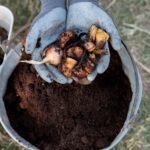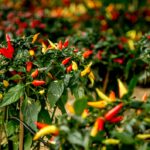Draught horses, known for their strength, endurance, and gentle temperament, have long been an integral part of agricultural practices worldwide. In South Africa, these majestic equines play a vital role in farming operations, from plowing fields to pulling heavy loads. In this article, we’ll explore 10 essential aspects of breeding and farming draught horses in the South African context, shedding light on their rich history, unique characteristics, and enduring significance in the agricultural landscape.
1. Historical Significance
Draught horses have a storied history in South Africa, dating back to the early days of European colonization. These sturdy equines were essential for transportation, agriculture, and construction, helping settlers tame the vast wilderness and establish thriving communities across the country.
2. Breeds Commonly Used
Several draught horse breeds are commonly used in South Africa, including Percherons, Clydesdales, Shires, and Belgians. Each breed has its distinctive traits and characteristics, but all share a common ancestry rooted in the working horses of Europe.
3. Adaptability to Climate
Draught horses are well-adapted to the diverse climate and terrain of South Africa. With their robust constitution and thick coats, they can withstand the heat of the summer sun and the chill of winter nights, making them well-suited to the country’s varied agricultural regions.
4. Versatility in Farming Tasks
Draught horses are versatile animals capable of performing a wide range of farming tasks. From plowing fields and harrowing soil to hauling wagons and carts, they play a crucial role in traditional agricultural practices, offering farmers a reliable and efficient means of working the land.
5. Importance in Conservation Agriculture
In recent years, draught horses have seen a resurgence in popularity among farmers practicing conservation agriculture. Their ability to tread lightly on the land, minimize soil compaction, and work without fossil fuels makes them valuable allies in sustainable farming practices.
6. Training and Handling
Proper training and handling are essential for draught horses to perform effectively in farming operations. From an early age, these animals are taught to respond to commands, work in harness, and navigate obstacles with precision and skill, ensuring safety and efficiency in the field.
7. Maintenance and Care
Draught horses require regular maintenance and care to keep them healthy and productive. This includes providing nutritious feed, clean water, and adequate shelter, as well as routine veterinary care, grooming, and hoof trimming to prevent injury and disease.
8. Role in Cultural Events
Draught horses are not only valued for their utility in farming but also celebrated for their beauty and grace in cultural events and festivals. From agricultural shows and plowing competitions to parades and heritage festivals, these majestic equines hold a special place in South Africa’s cultural heritage.
9. Challenges and Opportunities
Despite their enduring popularity, draught horses face challenges in the modern agricultural landscape, including mechanization, urbanization, and changing land-use patterns. However, they also present opportunities for sustainable agriculture, ecotourism, and heritage conservation, highlighting their continued relevance in the 21st century.
10. Legacy and Heritage
Above all, draught horses embody a rich legacy and heritage deeply intertwined with South Africa’s agricultural history. As stewards of this legacy, farmers, breeders, and enthusiasts continue to preserve and promote the heritage of draught horses, ensuring that their contributions to the country’s agricultural landscape are remembered and revered for generations to come.
Breeding and farming draught horses in South Africa represent a timeless tradition rooted in the land, culture, and heritage of the country. With their strength, versatility, and enduring appeal, these majestic equines continue to play a vital role in shaping the agricultural landscape and enriching the lives of those who work with them.
Join 'Farmers Mag' WhatsApp Channel
Get the latest Farming news and tips delivered straight to your WhatsApp
CLICK HERE TO JOIN






